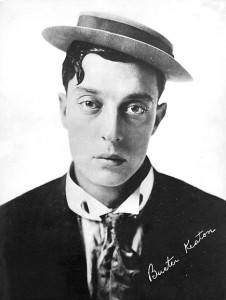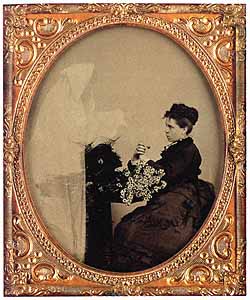Parts is Parts
It’s not yet definitive, but research recently published in the European Journal of Social Psychology “found in a series of experiments that participants processed images of men and women in very different ways. When presented with images of men, perceivers tended to rely more on ‘global’ cognitive processing, the mental method in which a person is perceived as a whole. Meanwhile, images of women were more often the subject of ‘local’ cognitive processing, or the objectifying perception of something as an assemblage of its various parts.” See the July 25, 2012 report, “Don’t objectify me! Brain is hardwired to see women as body parts,” at Joomla!
 In summing up the findings, Sarah Gervais, assistant professor of psychology at the University of Nebraska-Lincoln and the study’s lead author, stated, “We don’t break people down to their parts – except when it comes to women, which is really striking. Women were perceived in the same ways that objects are viewed.” The study presented its participants with photographic images of “fully clothed, average-looking men and women. Each person was shown from head to knee, standing, with eyes focused on the camera.”
In summing up the findings, Sarah Gervais, assistant professor of psychology at the University of Nebraska-Lincoln and the study’s lead author, stated, “We don’t break people down to their parts – except when it comes to women, which is really striking. Women were perceived in the same ways that objects are viewed.” The study presented its participants with photographic images of “fully clothed, average-looking men and women. Each person was shown from head to knee, standing, with eyes focused on the camera.”
As Gervais points out, “the fact that people are looking at ordinary men and women and remembering women’s body parts better than their entire bodies was very interesting.” (Click here for an abstract of the article, “Seeing women as objects: The sexual body part recognition bias,” in the European Journal of Social Psychology, June 2012 issue. You can purchase access to it there as well.)
The article goes on to say, “Also notable is that the gender of participants doing the observing had no effect on the outcome. The participant pool was evenly divided between men and women, who processed each gender’s bodies similarly: Regardless of their gender, perceivers saw men more ‘globally’ and women more ‘locally.'” I’m no expert in feminist theory, but if women “objectify” women in exactly the same way that men do, wouldn’t that mean that this isn’t some despicable guys-only behavior, an accusation that goes back to the advent of second-wave feminism in the ’60s? Doesn’t it suggest that forty years of discourse about the dreaded, shameful “male gaze” has been nothing more than ideologically driven blather?
Just asking.
Is He Serios?
![]() Claire O’Neill’s NPR page, The Picture Show, featured “aura imaging” in her July 23, 2012 posting, “A Camera That Sees Your True Colors?” This led me to the website for Aura Imaging™, where the inventor of this technology, John Coggins, explains how it works.
Claire O’Neill’s NPR page, The Picture Show, featured “aura imaging” in her July 23, 2012 posting, “A Camera That Sees Your True Colors?” This led me to the website for Aura Imaging™, where the inventor of this technology, John Coggins, explains how it works.
As a matter of habit, I distrust any company that misspells the word “fundamentals” in its literature. (What a snob! as Rick Santorum would say.) Still, I watched the promotional video, in which Coggins demos assorted gizmos that Progen, the parent company based in Redwood City, CA, manufactures and sells. They’ve marketed this concept since 1970, first with analog instant film and now with videocam imagery run through a computer program.
“We here at Progen want you to see your own Aura in order to help you gain deeper personal insight into emotional and mental states, as well as gain spiritual awareness,” the website enthuses. “The results from these effort [sic] are consistent in producing clear and precise aura images on film, computer monitors, TV and video.”
At the very top of its FAQ page, in answer to the question “How does it work?” we get the reply, “This is classified as a biofeedback apparatus.” Immediately thereafter comes this elaboration: “Our technologies produce an electronic interpretation of what we believe the Aura would looks like. It does not photograph the actual Aura. There’s nothing that exists which can do this.” (Emphasis in the original.) So these results constitute “clear and precise” images of something imagined by computer programmers hired by Progen and generated via an algorithm.
A bit further on in the FAQs we find this, in response to the query “Does the equipment photograph the actual Aura?” A: “The cameras produces an electronic interpretation of what we believe the actual Aura would look like.” So these are interpretations of beliefs — acts of faith, you might say, evidence of things not seen.
But those programmers with their faith-based algorithms didn’t do it alone. Q: “Who decided what the colors mean?” A: “Guy Coggins, the inventor of biofeedback Aura Imaging, based his color interpretations on different electrical measurements. Each color has its corresponding electrical frequency which can be measured. Coggins also was inspired by the extensive research and writing by Dr. Max Luscher who has done the most scientific studies on color preference and personality. He was most famous for his best selling book The Luscher Color Test, and was a contepomtary [sic] of Sigmund Freud and was very popular during the late 1960’s.”
Additionally, they’ve called in outside consultants. Q: “Is it accurate?” A: “We have corroborated [sic] with many psychics during the evolution of our products. We have developed the camera so that the colors produced by our products match the same colors seen by aura-reading psychics. Usually the colors that psychics see are less vivid; they may see more pastel-like colors. We, however, have amplified the colors a bit so we have more defined differentiation between the various frequencies of biofeedback inputs.” So they matched them to the perceptions of psychics, then unmatched them.
The scientificiness of all this (to take a cue from Stephen Colbert) must certainly persuade all but those skeptics like me who insist on distinguishing between “collaborate” and “corroborate.” This mumbo-jumbo evokes the late Ted Serios, practitioner of what got labeled “thoughtography” in the 1960s, and the “spirit photography” that has made cyclical appearances since the medium’s early days. As Eric Burdon reports that Bo Diddley said upon hearing Burdon’s narrative of Diddley’s biography, “Man, that sure is the biggest load of rubbish I ever heard in my life.” (Emphasis in the original.)
To see how one photographer, Carlo Van de Roer, has put this technology to creative use, click here for his website. Van de Roer uses a modified Polaroid Land camera and instant film, the original analog version of Coggins’s system. Van de Roer has no illusions about what he terms the “pseudo-scientific” premise of this equipment. Still, the results don’t particularly impress me. After all, nowadays there’s an app for that: check out iAura and GhostCam.
Booty Dooty Call in Singapore
I’ve never been to Singapore, and don’t know much about the place. In recent years I’ve learned that they believe in caning people who’ve behaved badly (this kinky tendency no doubt inherited from the British colonization that ended in 1963) — offenses punishable in this manner including spitting in public and throwing your chewing gum on the street. They hang convicted drug traffickers. And they encourage their citizenry — or at least that segment thereof consisting of “financially secure adults in stable, committed, long-term relationships” — to fuck like bunnies without contraception in order to increase the country’s population.
As a contribution toward that end, this year Mentos — yes, the mints brand — decided, ostensibly on its own initiative, to produce an unusual music video for the Singapore market encouraging people to view “National Night” as an occasion for rampant procreation. Their slogan? “This National Night give birth to a nation.” (Technically speaking, of course, unless they’d reached the ends of their pregnancies no one could actually “give birth” on such short notice; at best they could achieve conception. But who’s counting?)
National Night is the evening of August 9th, celebrated as National Day because it marks the date on which Singapore terminated its short-term inclusion in Malaysia to become independent. And Singapore has a rapidly aging population with a birth rate problematically low enough that the government runs a dating service for its singles and provides whopping benefits to new parents.
This quasi-r&b/rap advertorial features a cozening male voice and a simpering, giggly female voice delivering a smarmy lyric that conflates sex, patriotism, and conception in ways I hadn’t previously imagined possible (or imagined at all). Their accents sound distinctly American, even African-American; does that sell parenthood in Singapore? But Usher or Beyoncé they ain’t. Click here to view the video on YouTube. You can even download a free mp3 of the song at the Facebook page they’ve created for the video.
The notoriously prudish Singaporean government has not acknowledged the ad, but hasn’t censored it either. That seems unusual, since, as Wikipedia puts it, “Censorship in Singapore mainly targets political, sexual, racial and religious issues” — leaving one free to talk without restraint about food, lodging, transportation, fashion, sports, and the weather. Local bands have agreed to play the song in bars and clubs on the nights leading up to National Day, and after the National Day parade the marching bands will play the song to prompt celebrants to skip the fireworks so they can go home and get it on.
This isn’t about photography, or even in any way photography-related (though the Barbara Kruger influence on their typography is evident). It is about media and the digital environment, of course. But I present this instance of midsummer madness to you mostly because the sheer weirdness of human beings confirms what Emile Zola wrote and I practice, here and elsewhere: “I invent nothing. . . . My role as a critic consists in studying from whence we come and our present state.”
And also because, despite myself, this video made me want to share the luv — the pure, sincere, heartfelt luv that the government of the Republic of Singapore, the Perfetti Van Melle Corporation (maker of Mentos), and the Bartle Bogle Hegarty Asia Pacific ad agency (which produced this video for Mentos) feel for all of the country’s citizens . . . those of them who qualify as “financially secure adults in stable, committed, long-term relationships,” that is. Come next May, we’ll find out if that conditional luv got reciprocated.
•
This post supported by a donation from the Estate of Lyle Bongé.















Allan–
Perhaps the strangest collection of Bits & Pieces yet, and one which left me quite adrift.
Not having many actual humans to observe, I cannot verify where I look when confronting any. And, with failing eyesight, I’m not sure I’d be aiming my peepers at the designated target anyway.
I began to feel ill when I read about the auras and thoughtography, kind of a reddish burbling in my stomach.
I am very disappointed that even were I in Singapore I am beyond the age where I might contribute a baby. Sigh… I did so want to share the luv but I will have nothing to show for my efforts in May even if I had succeeded in fucking like a bunny yesterday. I gather this is not an activity I could productively have engaged in solo, which is how I am.
However I am among those skeptics who insist on distinguishing between “collaborate” and “corroborate” so perhaps I am not a total loss?
Yr Mst Hmbl, Obdt & Lvg Svt,
Donna-Lee
After reading numerous articles on it, the objectification study as reported remains confusing and unconvincing to me (it was quite widely reported). Objectification of women is a topic on my mind lately, probably due to media coverage of the Olympics and discussions about it.
The study’s design seems to me problematically steeped in cultural and social biases and assumptions. What is meant by “average” or “ordinary”? For example, do the people depicted represent a median body type, or a gamut of “average” types? And of what culture? What about race and age? Why clothed? What kind of clothing and why? Why frontal only? Who were the test’s subjects? Were they also “average”? Representative? Were they all undergraduates, or a cross section of the US population, etc? What is a “sexual” or “sexualized” body part exactly? And who decided all these arbitrary parameters?
And another thing that must be acknowledged, but hasn’t been commented on: the study tested how subjects look at *photographs* of people, not how they perceived real live people.
I think it would be fascinating to do a similar study with rear views, across cultures, or with actual people that interact.
I can’t answer the question you raise, Mr. Coleman, except to opine that if the “male gaze” is part of our “man’s world”, then we have all been conditioned to it, men and women alike.
As I noted at the outset of my comment on the study, the results of this experiment aren’t by any means definitive. It hasn’t undergone independent replication, and corollary questions such as those you raise certainly need answering.
With that said, I fail to see how any study in the realm of social psychology could start out or end up as anything except “problematically steeped in cultural and social biases and assumptions.” I hope you’re not suggesting that the assertions that men “objectify” women using a technique called the “male gaze” somehow came into existence free of such biases and assumptions.
The obsession on the part on many Black women with Olympic gold medalist Gabby Douglas’s hair certainly suggests that women have the ability to see each other as “parts.”
As for the “male gaze,” I must have stepped out to the bathroom when they were teaching that technique in high school. Nowadays I try to exercise mine from time to time, by practicing in the mirror; when my wife Anna catches me at it, she bursts out laughing.